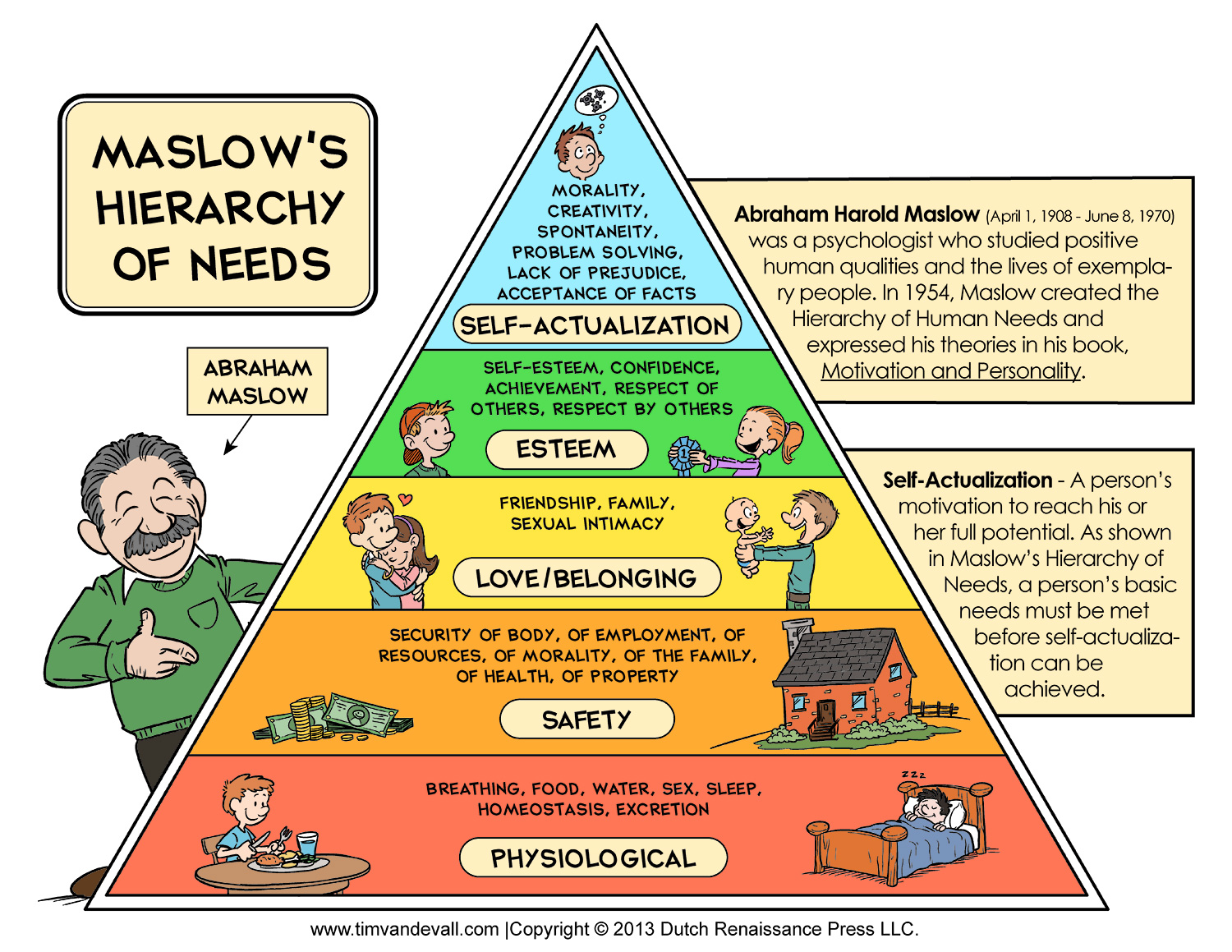Maslow’s hierarchy of needs is a theory in psychology proposed by the American psychologist Abraham Maslow in his 1943 paper “A Theory of Human Motivation”. This is a theory of psychological health predicated on fulfilling innate human needs in priority, culminating in self-actualization.In 1943, Abraham Maslow proposed five different kinds of human needs, beginning with the most basic: survival. Maslow's hierarchy of needs is a description of the needs that motivate human behavior.

Maslow studied what he called exemplary people such as Albert Einstein, Jane Addams, Eleanor Roosevelt, and Frederick Douglass rather than mentally ill or neurotic people, writing that "the study of crippled, stunted, immature, and unhealthy specimens can yield only a cripple psychology and a cripple philosophy." Maslow studied the healthiest 1% of the college student population.Maslow's theory was fully expressed in his 1954 book Motivation and Personality.The hierarchy remains a very popular framework in sociology research, management training and secondary and higher psychology instruction.
The hierarchical effect
A key aspect of the model is the hierarchical nature of the needs. The lower the needs in the hierarchy, the more fundamental they are and the more a person will tend to abandon the higher needs in order to pay attention to sufficiently meeting the lower needs. For example, when we are ill, we care little for what others think about us: all we want is to get better.
Maslow called the first four needs 'D-need' as they are triggered when we have a deficit. Only self-actualization is a need that we seek for solely positive reasons. Maslow also called them 'instinctoid' as they are genetically programmed into us as essential for evolutionary survival. Loss of these during childhood can lead to trauma and lifelong fixation.
Maslow's hierarchy of needs is a pyramid of needs that all human beings must fulfill to be happy. People can't get the next highest level of needs met until they first meet lower levels of needs, and if they get stuck at any one level they may experience depression, stress or pain. Although Maslow's hierarchy is usually used as a personal psychology tool, small-business owners can adapt it to the workplace. By helping their employees meet important needs at work, employers can create a highly motivated and happy workforce, which is more likely to be productive.
The five needs
- Biological and Physiological needs - air, food, drink, shelter, warmth, sex, sleep.
- Safety needs - protection from elements, security, order, law, stability, freedom from fear.
- Love and belongingness needs - friendship, intimacy, affection and love, - from work group, family, friends, romantic relationships.
- Esteem needs - achievement, mastery, independence, status, dominance, prestige, self-respect, respect from others.
- Self-Actualization needs - realizing personal potential, self-fulfillment, seeking personal growth and peak experiences.

Maslow believes that people would not move on down this list to be motivated by the next set of needs until the previous set(s) had been satisfied. here’s a short video link below which illustrates Maslow’s Hierarchy of Needs by drawing on clips from the Disney film ‘Up’.
References
http://www.callofthewild.co.uk/library/theory/maslows-hierarchy-of-needs-how-to-motivate-your-staff/